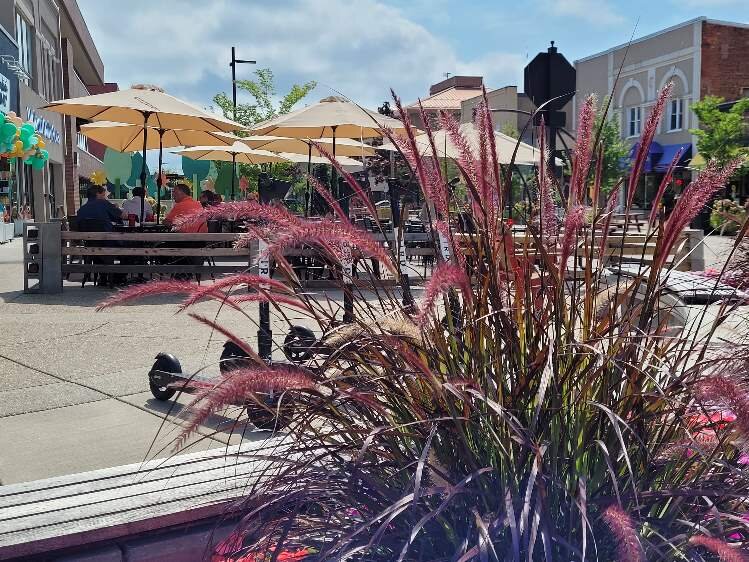From the most spectacular skyscrapers to the tiny house, architecture is at the core of what see and feel.
In the second of a Catalyst Community series, we're again going to learn about the influence of architecture on Midland. Our instructor is Paul Haselhuhn, a Midland resident, and the president of WTA (Wigen Tincknell Associates) Architects, a general practice firm founded in Saginaw in 1947. They specialize in architectural design including commercial, education, healthcare, governmental and more.
![]() Paul Haselhuhn is the President of WTA Architects.
Paul Haselhuhn is the President of WTA Architects.
Haselhuhn has been with WTA since 1998. He’s been a project manager on a wide variety of projects and now specializes in higher education and commercial facilities.
Catalyst Community: The importance of urban planning
Paul Haselhuhn, President of WTA Architects
Sitting downtown on a Tuesday evening in the middle of August, much of Main Street is closed to traffic and has become a public promenade. Diners spill out past the sidewalks into the streets; trees and grass grow where automobiles drove a few short weeks ago, and as you sit, eat or shop, the always-present opportunity abounds to meet a friend or neighbor and catch up on life.
![]() A shopper at Serendipity Road in downtown Midland.
A shopper at Serendipity Road in downtown Midland.
This past December, I had one of the best days of Christmas shopping I’ve experienced in as long as I can remember. I drove downtown one Saturday morning and found a parking space near a coffee shop I’ve frequented since my move to Midland over 20 years ago. I stopped in and ordered my favorite, a raspberry latte – yeah, I’m that guy. That morning was special, the temperature was below freezing, but not too cold. It was snowing, big flakes, and as I stepped onto the sidewalk, I noticed I could hear holiday music playing; where it came from, I didn’t know. As I began to walk, with my latte in hand, I didn’t know how successful my trip downtown would be. You see, I had planned that day to be like so many other shopping experiences this time of year., going from one store to another, one side of town to the other., My hopes were not high that I’d get through this day with significant success, but that’s not what happened. You see, as I began down one side of the street and up the other, I found business after business welcoming me in, and in what seemed like no time at all, I had my arms full of gifts and memories to share with those closest to me. I made more than a few trips back to my car to unload as I took in the experience I hadn’t expected. Just like this warm summer night,, I witnessed other Midlanders doing the same thing I was, and unlike my many holiday shopping experiences in the past, there were somethings we all had in common: smiles on our faces and a bit of pep in our step.

So, what do my experiences have to do with urban planning? Well, you see, urban planning is a derivative of architecture, and if you read my last article, you’ll know that architecture is the act of designing and constructing the built environment – not just buildings, but also the spaces in between. To simplify it, urban planning studies those spaces, looking at the connections, paths and journeys experienced while being engaged in this built environment we live in. When it’s done right, those spaces in between the buildings and spaces we know enhance life by bringing us together to meet, shop, eat, work, and play. When done well, urban planning allows us to engage in life at a myriad of different levels.
![]() Much of Main Street is closed to traffic and has become a public promenade.
Much of Main Street is closed to traffic and has become a public promenade.
And right now, this is something Midland’s downtown has gotten right. Now we still have things to figure out; the Midland Area Farmers Market along with how to properly connect the East End to Main Street are just a couple examples. But, in my 20-plus years in Midland, downtown has transformed itself into a place with life that encourages engagement, and after this past year, that’s something we desperately need.
Enjoy this story?
Sign up for free solutions-based reporting in your inbox each week.